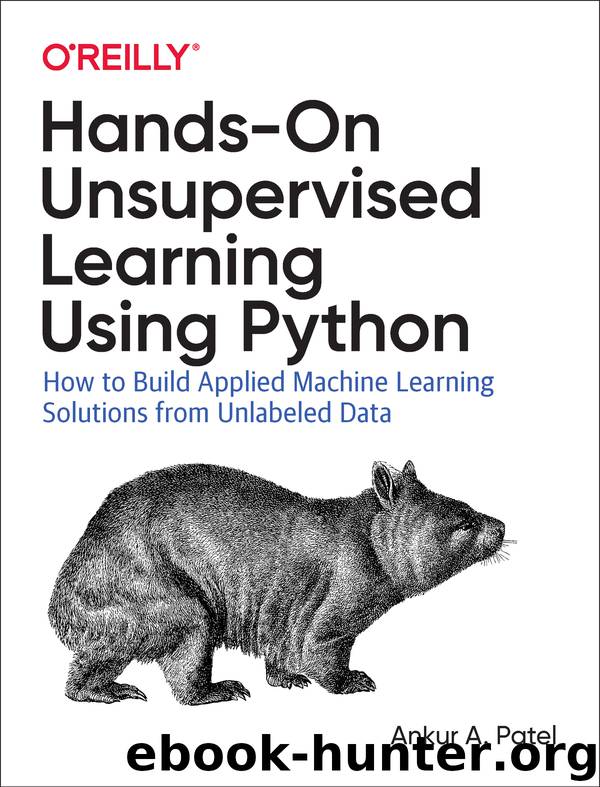Hands-On Unsupervised Learning Using Python by Ankur A. Patel

Author:Ankur A. Patel
Language: eng
Format: epub, pdf
Publisher: O'Reilly Media
Published: 2018-11-04T16:00:00+00:00
TensorFlow
Before we introduce autoencoders, let’s explore TensorFlow, the primary library we will use to build neural networks. TensorFlow is an open source software library for high-performance numerical computation and was initially developed by the Google Brain team for internal Google use. In November 2015, it was released as open source software.2
TensorFlow is available across many operating systems (including Linux, macOS, Windows, Android, and iOS) and can run on multiple CPUs and GPUs, making the software very scalable for fast performance and deployable to most users across desktop, mobile, web, and cloud.
The beauty of TensorFlow is that users can define a neural network—or, more generally, a graph of computations—in Python, and can take the neural network and run it using C++ code, which is much faster than Python.
TensorFlow is also able to parallelize the computations, breaking down the entire series of operations into separate chunks and running them in parallel across multiple CPUs and GPUs. Performance like this is a very important consideration for large-scale machine learning applications like those that Google runs for its core operations such as search.
While there are other open source libraries capable of similar feats, TensorFlow has become the most popular, partly due to Google’s brand.
Download
Hands-On Unsupervised Learning Using Python by Ankur A. Patel.pdf
This site does not store any files on its server. We only index and link to content provided by other sites. Please contact the content providers to delete copyright contents if any and email us, we'll remove relevant links or contents immediately.
| Computer Vision & Pattern Recognition | Expert Systems |
| Intelligence & Semantics | Machine Theory |
| Natural Language Processing | Neural Networks |
Algorithms of the Intelligent Web by Haralambos Marmanis;Dmitry Babenko(16280)
Jquery UI in Action : Master the concepts Of Jquery UI: A Step By Step Approach by ANMOL GOYAL(9408)
Test-Driven Development with Java by Alan Mellor(7737)
Data Augmentation with Python by Duc Haba(7612)
Principles of Data Fabric by Sonia Mezzetta(7381)
Learn Blender Simulations the Right Way by Stephen Pearson(7296)
Microservices with Spring Boot 3 and Spring Cloud by Magnus Larsson(7139)
Hadoop in Practice by Alex Holmes(6589)
RPA Solution Architect's Handbook by Sachin Sahgal(6519)
The Infinite Retina by Robert Scoble Irena Cronin(6218)
Big Data Analysis with Python by Ivan Marin(5937)
Life 3.0: Being Human in the Age of Artificial Intelligence by Tegmark Max(5520)
Pretrain Vision and Large Language Models in Python by Emily Webber(4897)
Infrastructure as Code for Beginners by Russ McKendrick(4658)
Functional Programming in JavaScript by Mantyla Dan(4441)
WordPress Plugin Development Cookbook by Yannick Lefebvre(4386)
The Age of Surveillance Capitalism by Shoshana Zuboff(4252)
Embracing Microservices Design by Ovais Mehboob Ahmed Khan Nabil Siddiqui and Timothy Oleson(4149)
Applied Machine Learning for Healthcare and Life Sciences Using AWS by Ujjwal Ratan(4136)
